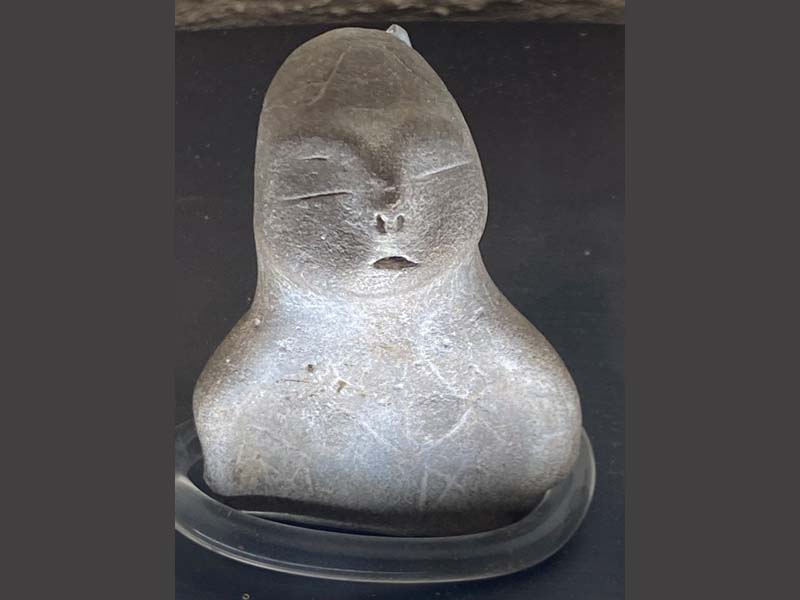In the complex of the Archaeological Park of Contrada Arpinova a total of 8 fragmentary specimens considered plastic artefacts were found; among these, two female statuettes about 7 cm high are molded in the round while the other artifacts are fragments of the faces of statuettes, some schematized in bas-relief.
One statuette in particular arouses interest for the particular expression of the face and for some symbols shown on the body. The famous Lithuanian archaeologist Marija Gimbutas was also interested in this statuette who, in her book "The language of the Goddess” (Milan 1990, p. 22-23) writes: “Signs to M they also appear on various figurines, particularly under the breasts, the source of milk and nourishment. Also this statuette, with mask and necklace a V, bears one M on the back. Also note the butterflies, a symbol of regeneration, placed under the M.” The find is a female figure, probably a Mother Goddess, appears in a state of trance with her head thrown back in a hieratic attitude, a Phrygian-type cap on her head, her eyes half closed and with a strip of red ocher running down her from one nostril; she wears a necklace with 22 beads that falls on her chest; below her small breasts there are two specular M signs, to symbolize water which according to Gimbutas is vital substance par excellence, symbol of the Goddess, while for others they would represent the constellation of Cassiopeia; even further down there are two drawings of a butterfly, a symbol of regeneration, linked to the life cycle of man and nature. This figurine was made with a grayish impasto technique with unevenly cooked calcareous inclusions and this characteristic, together with the use of the graffiti technique for the incisions, meant that it was dated to the III phase of the ancient Neolithic.
The other statuette, dated to the Middle Neolithic, was made of well-fired, pinkish-colored figulina clay, with somewhat rough surfaces and more summary and coarser execution than the previous one. This too is in the round, the lower part is missing, the body has only the two breasts in relief, the nose and the two arms adhering to the body; the eyes and mouth are indicated by slightly deformed horizontal notches from damage during excavation. The Passo di Corvo site is of particular interest as several excavation campaigns have been concentrated in the area which have brought to light the remains of a large settlement, considered the largest village in Europe dating back to the Neolithic age (between the 2th and XNUMXth millennium BC). Less than XNUMX hectares wide, the village was protected by a triple moat with an arched plan and about a hundred complexes of huts. The presence of many ditches around the villages and of C-shaped ditches has not yet obtained a valid explanation: it has been thought that they served to protect the houses or as a sort of enclosure for housing animals, but neither of the two indications it is suitable as the houses were outside the ditches which in turn were too small to contain animals.
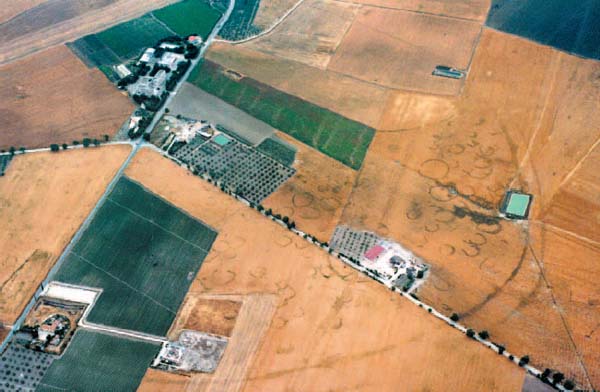
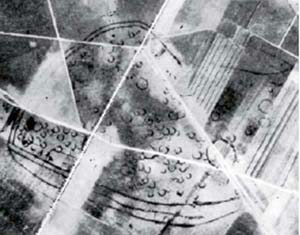
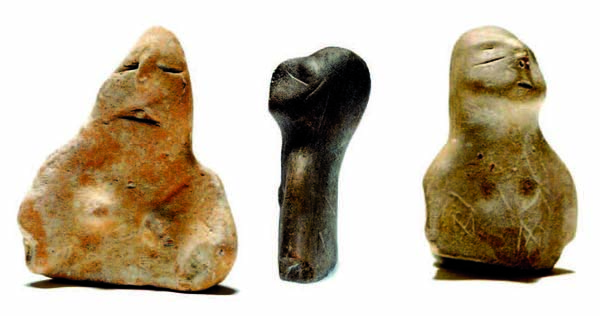
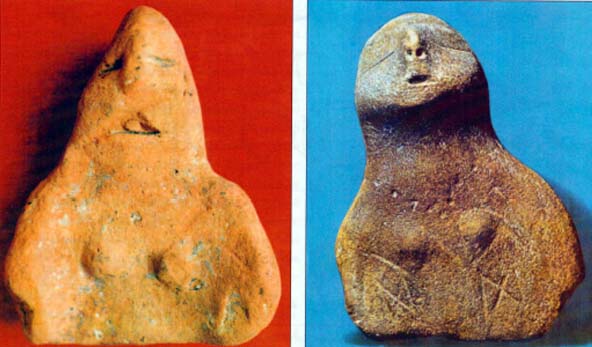
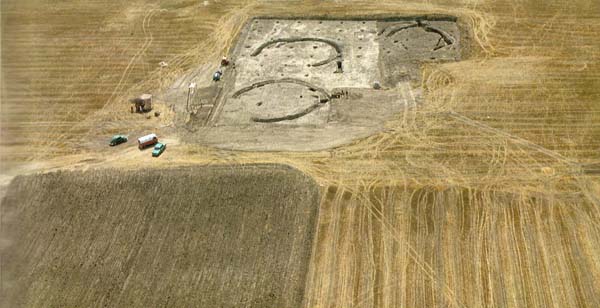
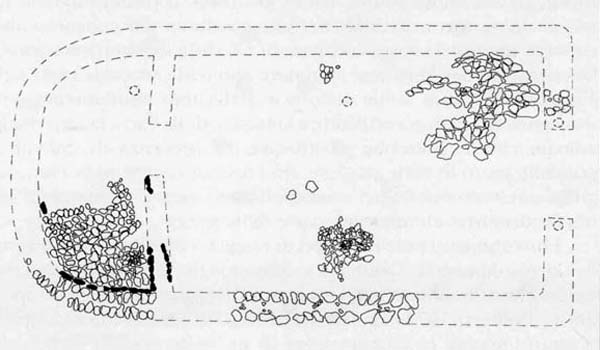
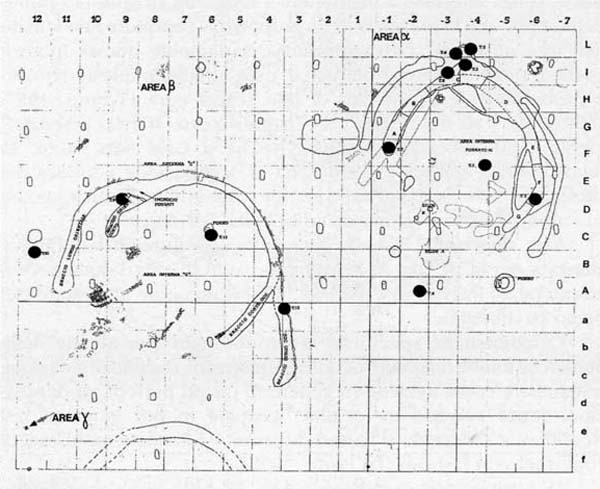
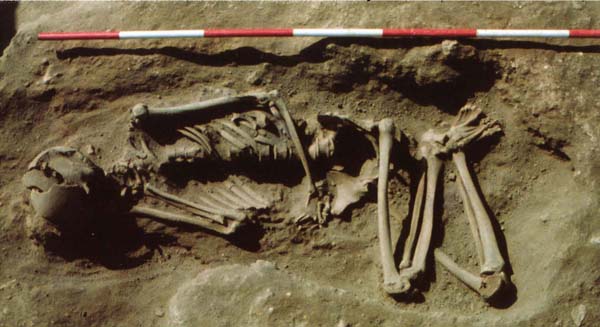
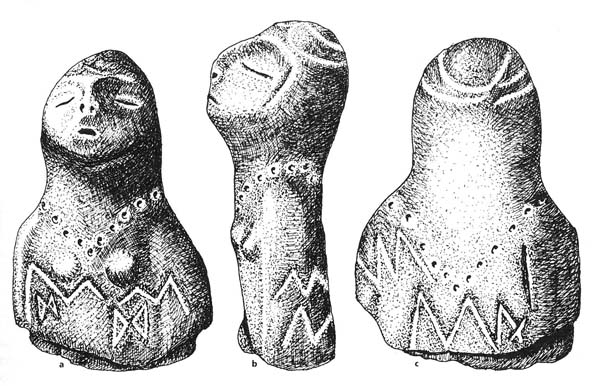
Historical notes
The discovery of the site occurred by chance, through the study of some aerial photos taken by the Royal Air Force in 1943 and thanks to the intuition of the British Army Lieutenant JSP Bradford who was the first to identify in the images taken by fellow pilots, the signs of the presence of ancient "C" shaped settlements that outlined the perimeters of the Neolithic huts.
"… Approximately a thousand sites have been identified from above in the Tavoliere. In 1978-79 I personally witnessed this incredible density of villages surrounded by moats working with a magnetometer and a team from UCLA in the area between the Cervaro and Ofanto rivers. Over the course of a few weeks, I identified seventy-five moated settlements. The magnetometer has detected the ditches, since everything that once belonged to the farmhouses – pottery, stone and bone tools and animal remains – has mixed inside them. Unfortunately we cannot reconstruct the houses, temples and their furnishings with in Central Europe and the Balkans, as very little is left in situ…” (M. Gimbutas, 2012, pp. 177-179). In the mid-70s, the excavations were conducted by the University of Genoa, assisted by Professor Santo Tinè; the site was rich in finds, burials, objects of worship and everyday life, now kept in the Civic Museum of Foggia and in the National Archaeological Museum of Manfredonia. The Archaeological Park is easily reachable on the state road 89 from Foggia to Manfredonia, take a detour to San Marco in Lamis on the Provincial road 26 until you reach your destination.
CARD
LATEST PUBLISHED TEXTS
VISIT THE FACTSHEETS BY OBJECT

